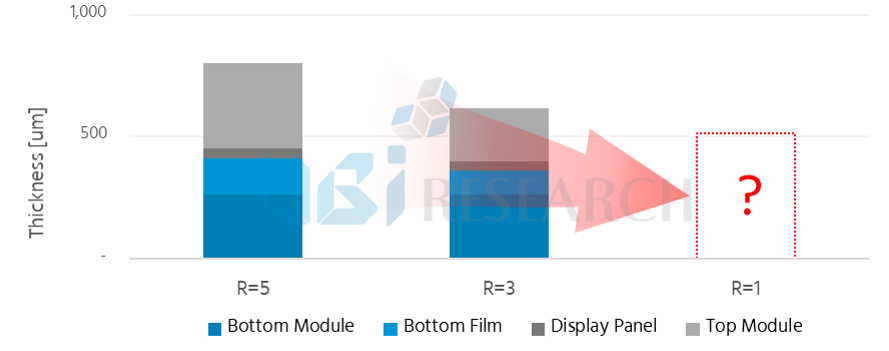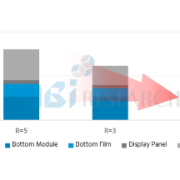Foldable OLED device is nearing commercialization. What are the technical challenges to be solved?
Attentions are growing for the foldable smartphone since it can provide a wider screen and higher resolution than the display of conventional smartphones, while maintaining the portability of the smartphone. The foldable smartphone is a smartphone when folded, and it becomes a tablet PC when it is unfolded. Following Samsung Electronics, Huawei is also aiming to launch a smartphone with a foldable display this year.
Yi Choong-Hoon, president of UBI Research, said, “Ideal foldable displays require such kind of reliability that there is no problem even with more than 300,000 times folding at the bending radius of 1R or less. For this, some changes or innovations are needed in the material and structure of the display.
In the ‘2018 OLED Component & Material Report’ published by UBI Research on May 21, 2018, the key issues and development trends for foldable OLED display with a bending radius of 1R are described together with the classified contents of structural change to secure reliability at thickness reduction and alternative material development.

<Change in OLED panel thickness accoding to bending radius, 2018 OLED component & material report, UBI Research>
In addition, the report covers the application status, development trends, and market forecast of key components and materials for rigid OLED and flexible OLED for mobile device, and large-area OLED for TV. Thus, it is helpful for the related part and material companies to develop their future directions, establish business strategies, and analyze technology and market trends.



